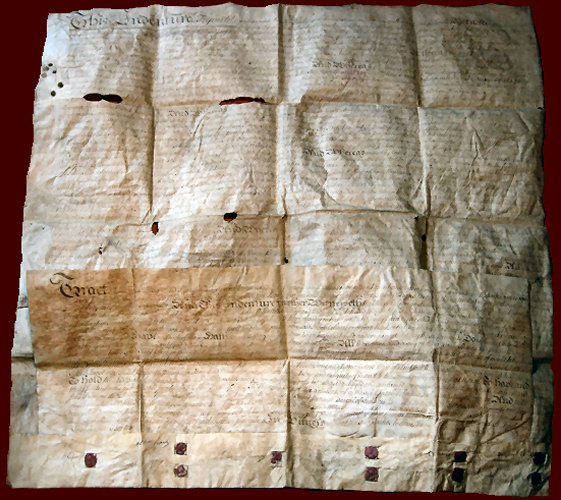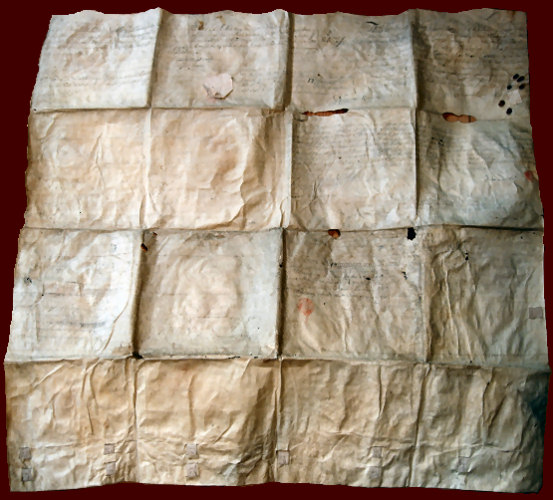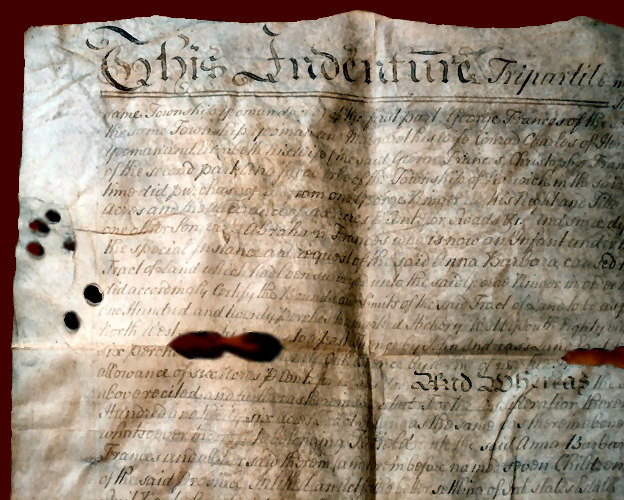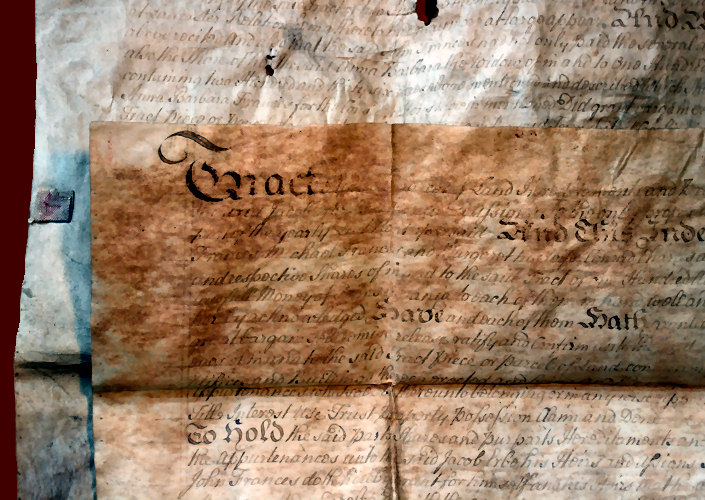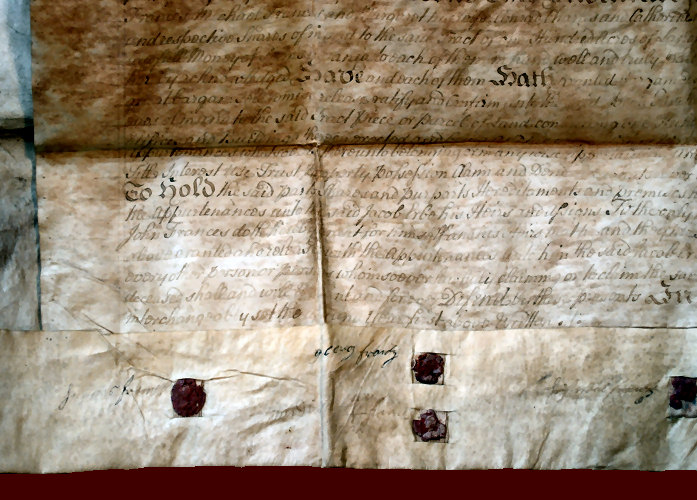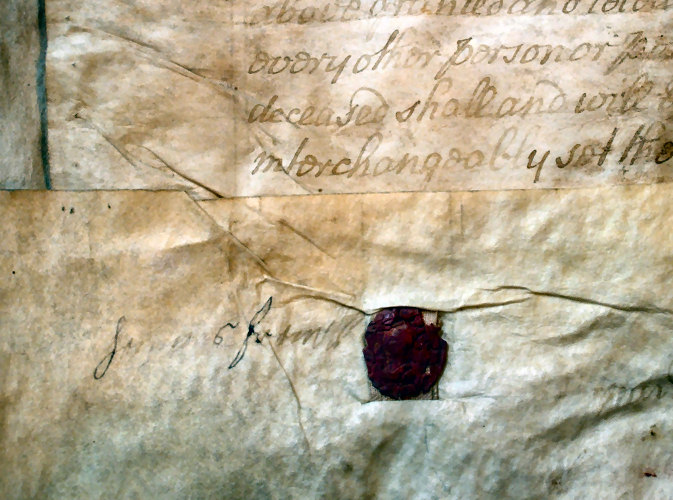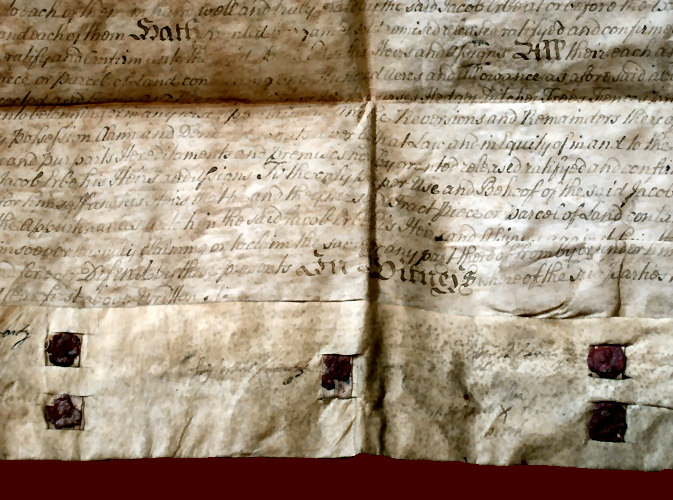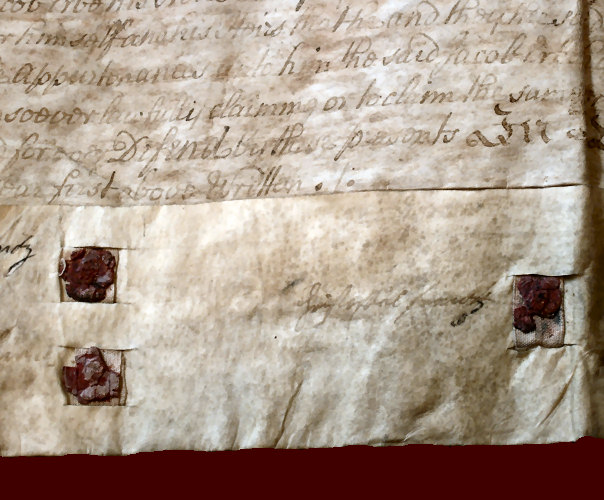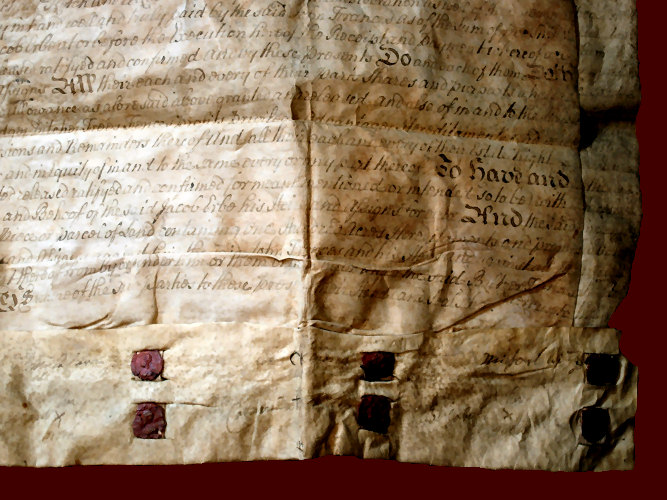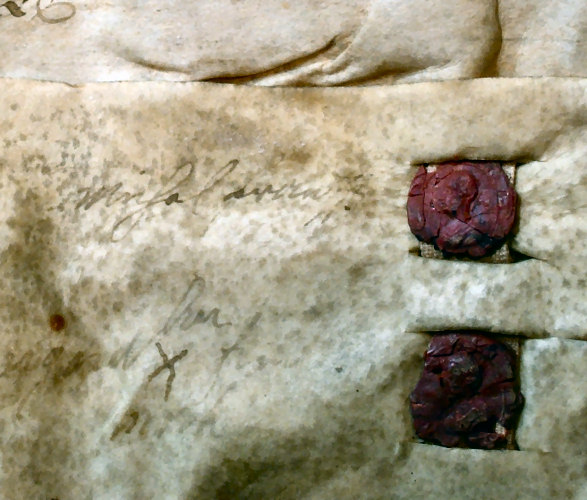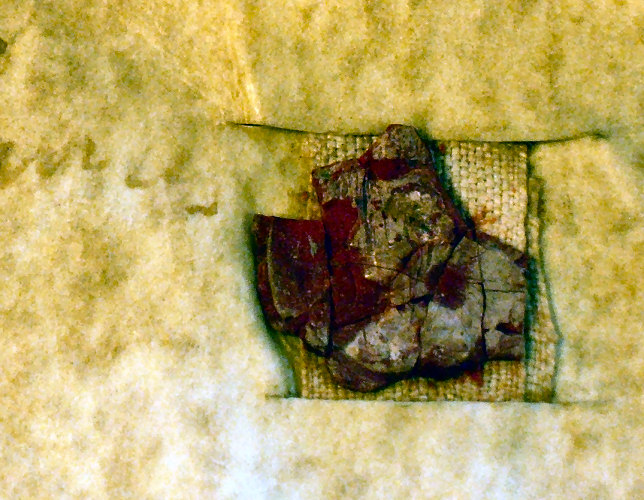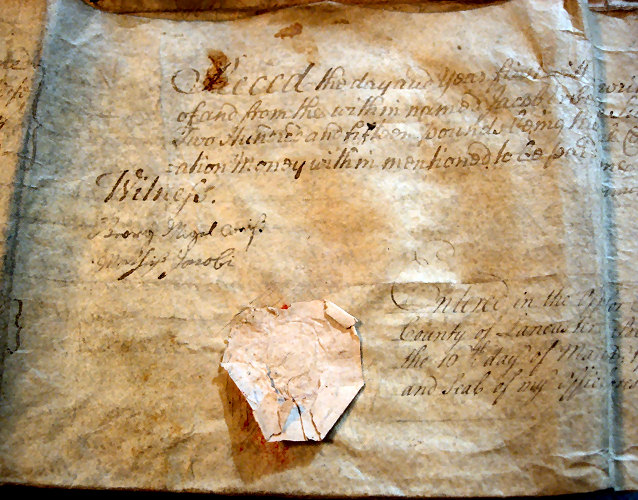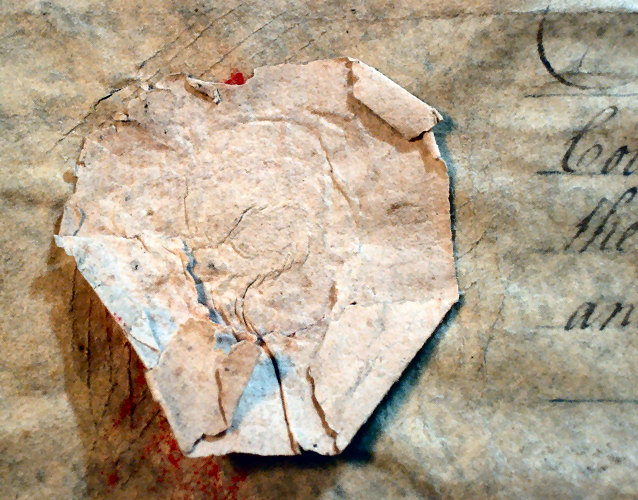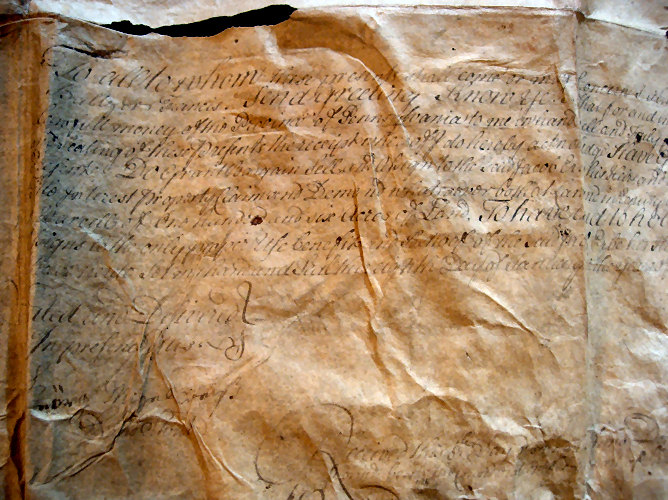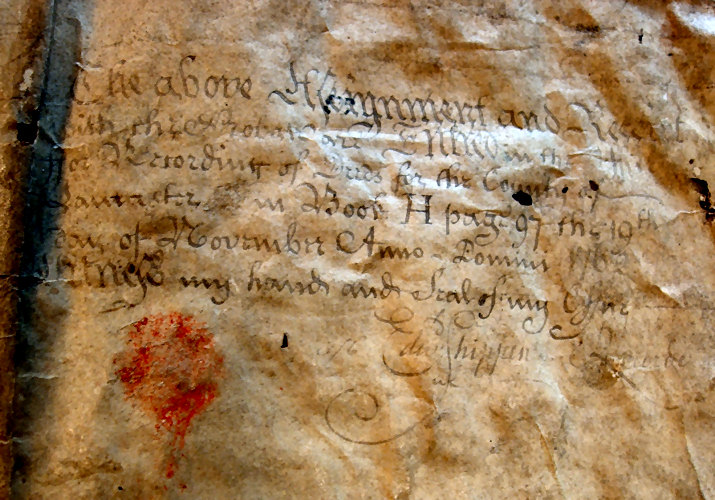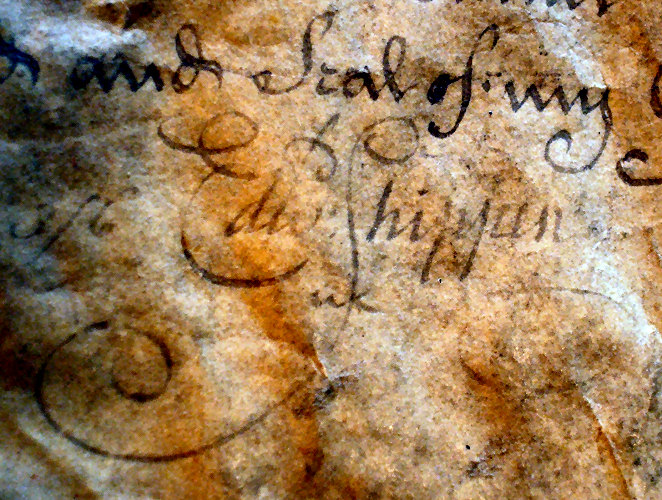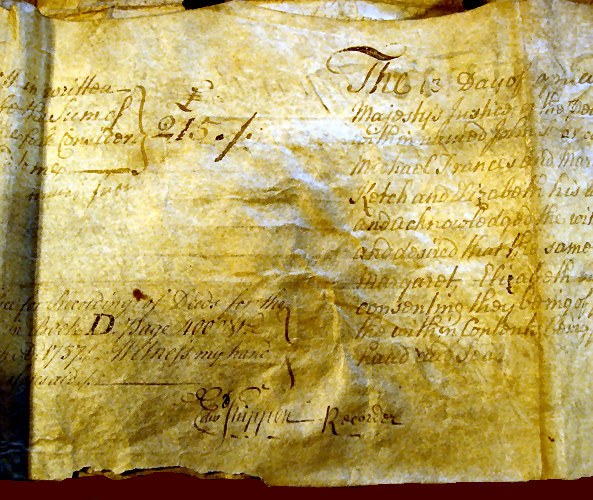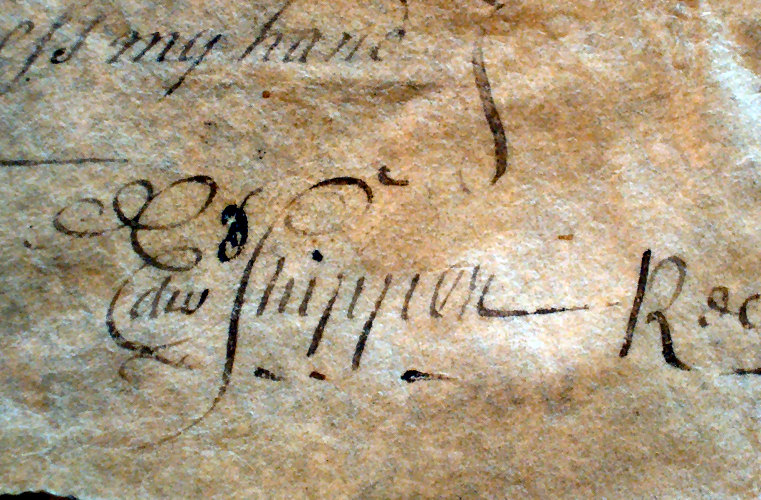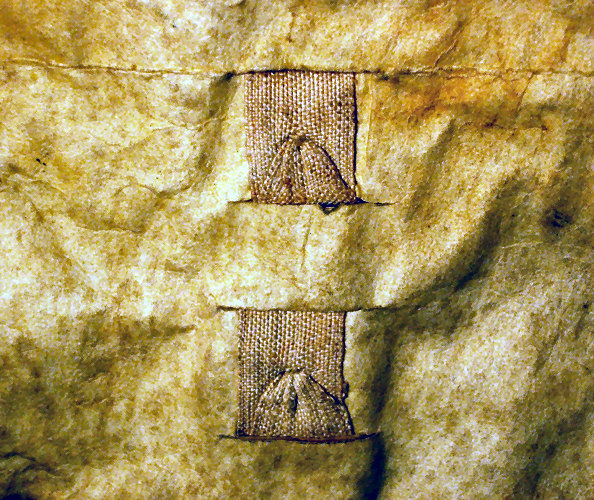

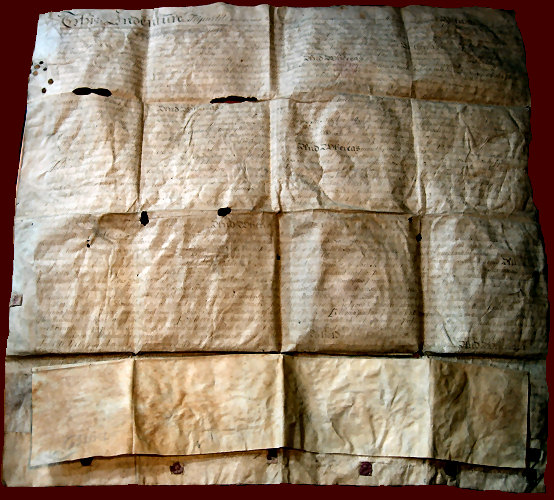
| This document is titled an indenture tripartite was made on 09 April 1756 in Lancaster County, Pennsylvania. It is written on parchment ~ tanned and stretched calfskin ~ which consists of the primary sheet along with a strip fastened to the bottom. In the Medieval Ages, the term, indenture tripartite referred to a transaction or agreement entered into by two parties before a court of law. (The three parts ~ tri-partite ~ consisted of the grantor, the grantee and the court of law.) By the time this document was written, the mid-1700s, the term was used to describe a deed transacted between any three parties. The photo above shows the primary sheet with the added portion folded down. The photo below shows the primary sheet with the added portion open fully. The third photo from the top of this page shows the primary sheet's back side. The ink on this deed has faded to the point that many parts of it are difficult to read. It can be discerned, though, that the document concerns the property of Balzer Frances, who died intestate. The property was ultimately granted to his eldest son, John Frances. Note the signature of Edward Shippen near the bottom of this page. Edward Shippen III (1703-1781) was a merchant in Philadelphia from 1732 to 1744, after which he was elected as Mayor of Philadelphia. He also served as a judge on the Court of Common Pleas while at Philadelphia. He later served as Prothonotary for the county of Lancaster, Pennsylvania after he moved there in May 1752, serving in that position until 1778. This Edward Shippen was the grandfather of Margaret/ Peggy Shippen, who married Benedict Arnold in 1779. Also note the very last photo on this page. It shows the woven fabric ribbons to which the wax seals are affixed. Each of the one-half inch wide woven fabric ribbons are pushed through a knife slit in the parchment, through the two layers of the folded primary sheet and also through the attached portion of parchment, and then pushed through a second knife slit to meet the starting point. A small slit in the ribbon allows the opposing end, after it has been wound through the layers of parchment, to be pushed into itself, closing it tightly. This view is of the ribbons from the back side of the document. On the opposite, front, side the wax seals were affixed. Closeup views of the similar wax seals reveal an image of the bust of a man facing toward the left. |
